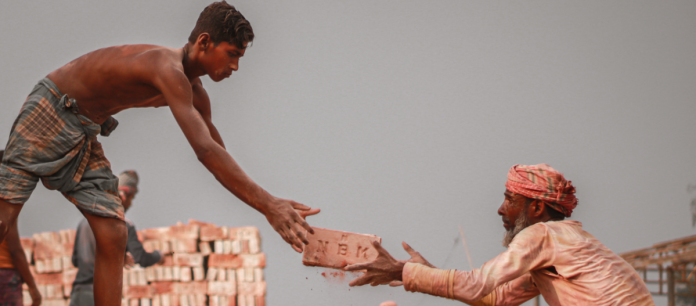DM Monitoring
New Delhi: A significant number of individuals in India are engaging in self-employment or unpaid labour, shows the Periodic Labour Force Survey (PLFS) data, for July 2022 to June 2023.
Moreover, the data highlights that, among the major religious groups, only Muslims have experienced a decline in their labour force participation rate (LFPR) and worker population ratio (WPR).
The PLFS was launched by the National Sample Survey Office in April 2017. It estimates the key employment and unemployment indicators such as Worker Population Ratio, Labour Force Participation Rate, and Unemployment Rate. It further measures the employment status among social and religious groups. Among the major religious groups, it names “Hinduism, Islam, Christianity and Sikhism”.
On a positive note, the latest data indicates that India’s unemployment rate for individuals aged 15 and above has reached a six-year low, standing at 3.2%.
The data shows a decrease in the unemployment rate in rural areas from 5.3% in 2017-18 to 2.4% in 2022-23, and in urban areas from 7.7% to 5.4%.
While these statistics may seem encouraging at first glance, it’s essential to examine the finer details to gain a more comprehensive understanding of the situation. The increasing share in self-employment
According to the PLFS data, a larger number of individuals are self-employed than those in casual labour and the regular salaried class.
In urban areas, a relatively higher number of people have salaried jobs as opposed to self-employment.
The PLFS divides employment status for workers into three broad categories: (i) self-employed, (ii) regular wage or salaried employees, and (iii) casual labour.
The overall rate of self-employed people increased to 57.3% in 2022-23 from 55.8% in 2021-22 and 55.6% in 2020-21. It was around 52% in 2017-18 and 2018-19.
Note that 2022-23 refers to the period from July 2022 to June 2023 and likewise for 2021-22, 2020-21, 2019-20, 2018-19 and 2017-18.
Within the self-employed category, two sub-categories have been established, which include: (i) own account workers and employers, and (ii) unpaid helpers in household enterprises.
“So [the] employer [category] is barely under 2% of the number of people in the economy. In other words, the own account workers’ category is highly driven by people such as the cultivators, weavers, potters, who work on their own, in rural areas. And in urban areas, they are the redi walas, thele walas, kabaadi, barbers, tailors, vendors, those who’re working on the street. The share of self-employed [people] in the total workforce is increasing, and within that most of the increase can be seen among unpaid family labour and own account workers,” said Santosh Mehrotra, professor of economics, Centre for Informal Sector and Labour Studies, School of Social Sciences, Jawaharlal Nehru University. Unpaid labour – which is categorised as ‘helper in household enterprise’ within self-employment – has increased to 18.3% in 2022-23 from 17.5% in 2021-22 and 17.3% in 2020-21.
“A regular worker gets a salary, an unpaid family labour within the self-employed gets nothing; an own account worker, [as earlier mentioned], is someone who in rural areas is a cultivator and will earn something when their crop is finished and [when] they sell it. So, what’s happening is that regular people [who have] lost work have gone to do something on their own,” he said.
He further explained that people are choosing to be self-employed, because of a lack of good work and wages. For example, an educated person would not want to do casual labour jobs.
He elaborated saying: “If the casual labour has reverse migrated back to his village, then he could be now doing MGNREGA (National Rural Employment Guarantee Programme) work sometimes, or has gone back to work on his family farm.”
He added that there’s another situation where women who had dropped out of the workforce return only to help their husbands. And that has happened consistently, on a massive scale, and distress has increased in the economy over the last five years.




